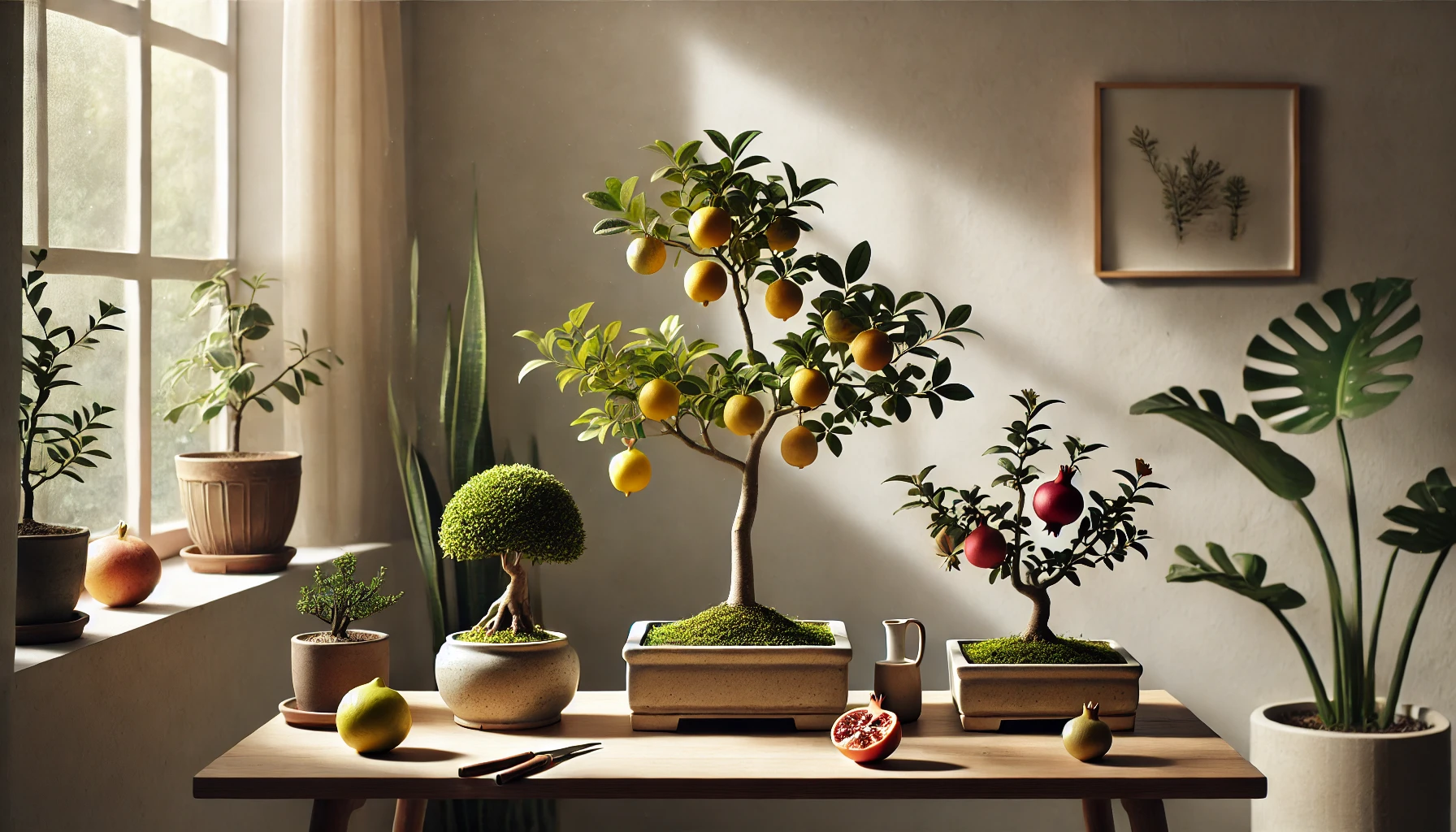Creating a fruiting bonsai is a delightful experience that combines beauty with functionality. Some fruit trees are easier to shape and maintain as bonsai due to their growth patterns, resilience, and adaptability. This guide highlights the easiest fruit trees to transform into stunning bonsai masterpieces.
Characteristics of Easy Fruit Trees for Bonsai
To identify the easiest fruit trees for bonsai, look for these characteristics:
- Naturally small or dwarf varieties.
- Resilient to pruning and shaping.
- Adaptability to different climates and environments.
- Ability to thrive in shallow pots with limited soil.
- Fruits that are small and proportionate to the tree’s miniature form.
Top Easy Fruit Trees for Bonsai
Lemon Tree (Citrus limon)
Lemon trees are a popular choice for bonsai enthusiasts. They produce fragrant blossoms and vibrant yellow fruits, adding both beauty and charm to your space. Dwarf varieties, like the Meyer lemon, are particularly suitable due to their compact size.
Care Tips: Lemon bonsai trees need plenty of sunlight, regular watering, and balanced fertilization during the growing season.
Fig Tree (Ficus carica)
Fig trees are hardy and forgiving, making them ideal for beginners. Their adaptability to various environments and their small, sweet fruits make them an excellent choice.
Care Tips: Figs prefer warm climates and thrive with consistent pruning and watering.
Orange Tree (Citrus sinensis)
Orange trees, especially dwarf varieties, are another easy option for bonsai. Their small fruits and glossy leaves create a captivating display.
Care Tips: Orange bonsai requires bright light, well-drained soil, and protection from frost in colder months.
Pomegranate Tree (Punica granatum)
The pomegranate tree is valued for its beautiful red flowers and small, edible fruits. Dwarf pomegranate varieties are especially well-suited for bonsai cultivation.
Care Tips: These trees thrive in warm climates with plenty of sunlight and moderate watering.
Apple Tree (Malus spp.)
Certain apple varieties, such as the crabapple, are excellent for bonsai. Their miniature fruits and vibrant blossoms add a touch of elegance to any bonsai collection.
Care Tips: Apple bonsai needs regular pruning, plenty of sunlight, and protection from extreme weather.
Cherry Tree (Prunus spp.)
Cherry trees are cherished for their stunning spring blossoms and small, sweet fruits. They are relatively easy to care for and offer a rewarding bonsai experience.
Care Tips: Provide full sunlight, moderate watering, and ensure good air circulation to prevent diseases.
Olive Tree (Olea europaea)
The olive tree’s small, hardy leaves and tiny fruits make it an excellent candidate for bonsai. Its natural resilience makes it easy to train and maintain.
Care Tips: Olive trees require plenty of sunlight, well-drained soil, and minimal watering.
Tips for Choosing the Right Fruit Tree
- Consider Your Climate: Choose a tree species that thrives in your region to minimize challenges.
- Start with Dwarf Varieties: Dwarf trees require less pruning and are naturally suited for bonsai cultivation.
- Begin with a Sapling: Younger trees are easier to shape and adapt to bonsai conditions.
- Check Tree Health: Select a tree with strong roots, healthy leaves, and no signs of pests or diseases.
Benefits of Growing Easy Fruit Trees as Bonsai
- Beginner-Friendly: These trees are forgiving and adapt well to training, making them perfect for novices.
- Year-Round Interest: Many fruit trees offer year-round beauty with seasonal blossoms and fruits.
- Compact and Manageable: Their natural characteristics make them easier to maintain in a small bonsai pot.
Creating a fruiting bonsai doesn’t have to be intimidating. By choosing the right tree, you can enjoy the rewarding process of bonsai cultivation with minimal challenges.

